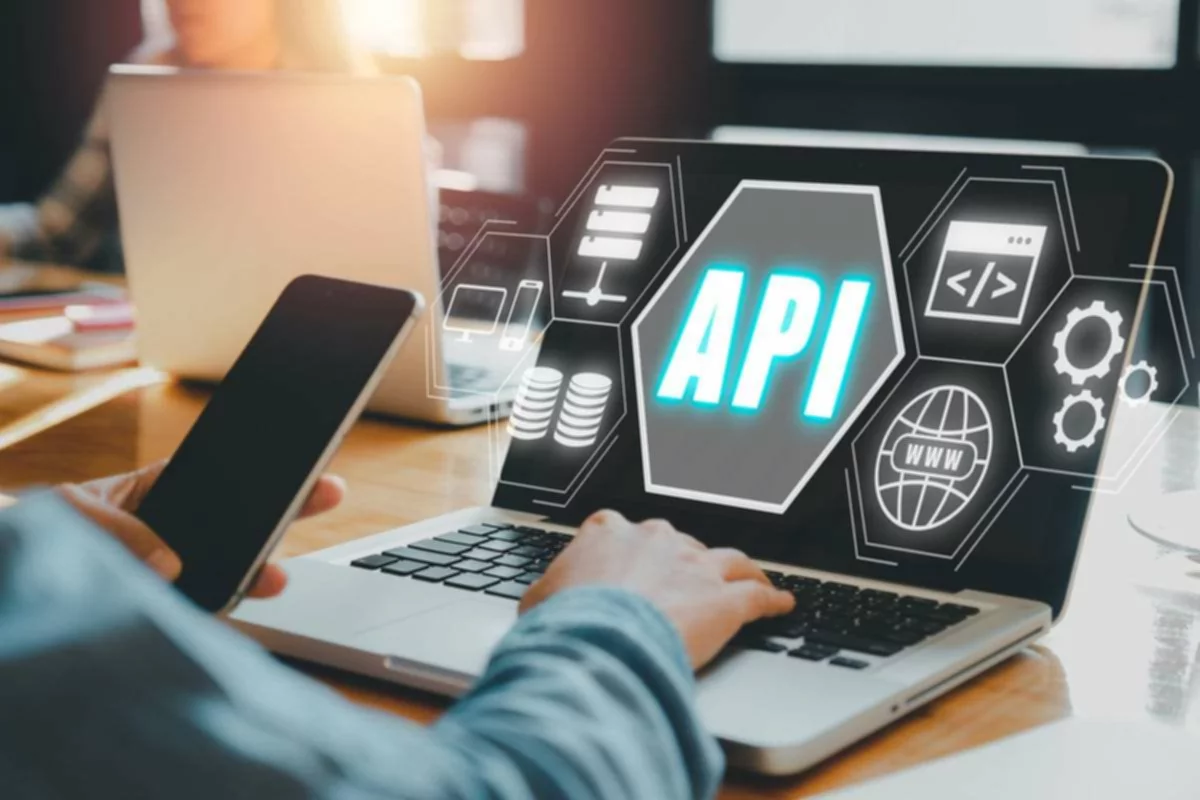- API explanation
- How does it work?
- Why is an algorithm considered an interface?
- Why do developers use APIs?
- API functions
- Categories of users
- Peculiarities of using APIs
During the software development process, companies often have to use third-party services. Examples of such situations include obtaining up-to-date information, adding specific functions by a different developer, setting up communication with remote (cloud) servers, etc.
Typically, developers must use APIs to complete mentioned tasks. What is an API? Let’s discuss this topic in detail. This article contains information about API’s abilities and functions essential for developers to create websites or software.


API explanation
The term API stands for Application Programming Interface. Simply put, it’s a set of rules and methods used by programs to communicate data to each other.
Such interaction occurs via numerous tools of the same program:
- methods
- classes
- structures
- functions
- constants
These are the key functioning principles of the programming interface (API). Let’s see an example: buying tickets for a movie. Most people use credit cards to buy them. When the buyer initiates the purchase, the cinema’s payment terminal communicates with the interface of a bank that issued this terminal. Then it sends the payment request to this bank to process the transaction.
Similarly, if a person needs taxi services and they use a mobile application, the API sends a request to the bank to process a remote financial operation.
How does it work?
One can compare a programming interface with a contract between a seller and a buyer. In this case, an app is a client that needs to receive certain information, while the website or server is the seller of this information. The agreement must specify the conditions of how and what data the buyer can receive.
Typically, APIs are included into:
- Programming languages. The software interface helps functions to communicate properly with each other. The function that requires data must follow the rules, such as the type of information to request and the characteristics sequence.
- Operating systems (Apple, Windows, etc.). The API helps applications get the necessary information from memory and adjust operating system settings. That’s why when developing an app for a particular OS, you must know its programming interface.
- Web. All services within the global network communicate with each other through the APIs. Developers officially and independently publish the framework that regulates the algorithm’s work when the programming interface is used. For instance, JSON objects can be used for Python. That’s how third-party services and applications can connect to the web.
As a rule, all developers use the web programming interface.

Why is an algorithm considered an interface?
It’s critical to understand that the interface is the boundary between two different functional systems in charge of interactions and data exchange. It’s worth mentioning that all occurring processes are hidden from each other. It means that you can use APIs of different systems without worrying or thinking about the request processing features and other parameters.
Here’s another API example: to make a call on a smartphone, the user doesn’t need to know how the touchscreen handles requests to the OS. The user must simply understand that the device is equipped with the ability to always perform certain actions in response to specific parameters.
APIs work similarly. The programming interface can perform specific application functions without the specialized knowledge of the client using the API’s abilities.
Why do developers use APIs?
This tool is designed for users’ convenience. The user doesn’t need to understand how devices process information when using a mobile phone, tablet, and other devices. They merely need to click on the icons to use them. APIs work similarly.
Developers are able to provide access to their products to third-party tools by using APIs. The list of tools includes storage services, illustrations, and other content. At the same time, software developers don’t need to write their code and study the features of other operating systems. Thus, this algorithm greatly simplifies and increases the speed of various processes.
There are several reasons why IT experts choose APIs. For example, the programming interface does the following:
- Offers the necessary tools to work with different software.
- Connects various systems with each other. It’s possible to authorize a website using an account registered on any other third-party service (for example, the social network Facebook or Google) when using APIs. Payment systems that can be connected to bank accounts operate similarly
- Ensures information security. The API pinpoints sensitive data that requires protection. This means that features without appropriate permissions won’t access this data.
- Significantly reduces the end product’s cost. It’s more affordable to use APIs than to develop software from scratch.
Developers of websites, software, and apps prefer using APIs for the above-mentioned reasons.
API functions
No restrictions or rules currently govern the process of adding API functions. Developers add options and methods necessary and useful to facilitate the interaction of their client’s software with third-party services.
For example, if the website aims to analyze text content, the programming interface will add methods to spot single-root words and conjunctions and determine the most repetitive phrases.
API functions help developers solve various issues besides completing utilitarian tasks of specific programs. Today, this algorithm can become an effective marketing element, for example, if access to the software interface is provided as a separate service.
Developers can use guides with methods to add chosen instrument’s functions. If the algorithm provides functions via the Internet (web version), the request should be sent in JSON format. Information is written directly in the “data” section.
Categories of users
API is popular not only among developers. Here’s who can use the algorithm’s functions:
- programmers
- business representatives
- state structures
It’s a convenient tool that allows you to set up a comfortable interaction with users and quick feedback from customers. Moreover, it retains its relevance for many developers of offline and online products.
Peculiarities of using APIs
In most cases, developers start working with the programming interface by using ready-made solutions and sets. Let’s take a closer look at the process of using APIs:
- Choose the algorithm that suits your business needs. It is best to choose based on your budget or platform (Facebook, YouTube, and other options). You can start working with free interfaces and then use paid tools. You will need to study the characteristics of the algorithm before making the final choice in favor of any API.
- Check out the tool’s documentation. It should include information on integrating the API into the business and using it effectively. Typically, such documents offer detailed instructions or a tutorial designed for beginners.
- Get a unique key. The key is required to set up the client identification process and obtain the necessary permissions to access information and register user interactions with the tool. You must undergo registration on the chosen platform to get a unique identifier key.
- Register the first request. You need an HTTPS client and detailed instructions from the supplier of the selected tool.
- Connect your application to the algorithm. It’s the developer’s task since they have the necessary data and knowledge of a particular product and API features.
The main task of the programming interface is to organize the interaction between apps and services. The usage of this algorithm makes it possible to significantly facilitate the process of obtaining data, increase its security and save imported information (import media, text).



